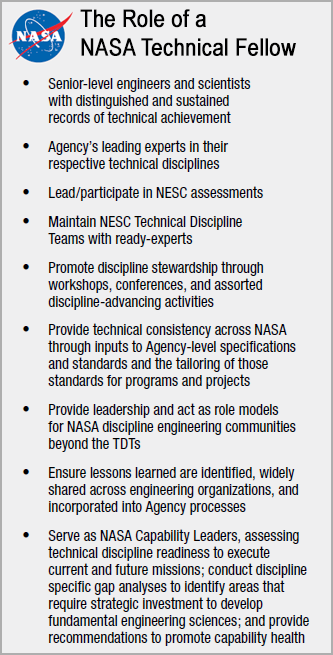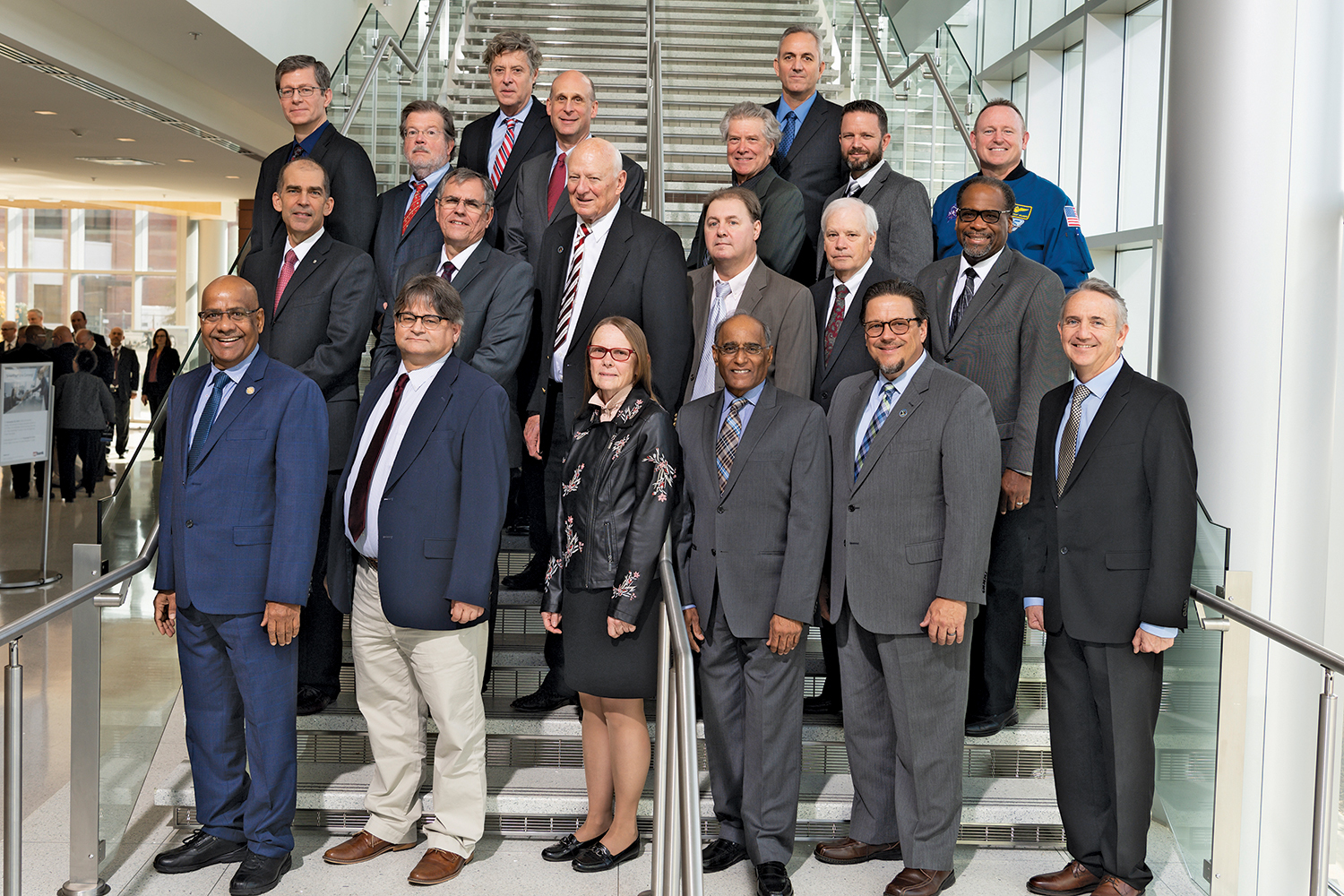The NESC has become widely recognized as a strong technical resource for customers and stakeholders seeking responsive service for solving NASA’s most difficult technical problems. NESC’s core technical strength is rooted in the broad knowledge base provided by the NASA Technical Fellows and their TDTs. When an Agency program or project requests help in tackling a challenging technical problem, the NESC typically turns to the NASA Technical Fellows to provide their expertise to solve it. Technical Fellows and their TDT members, drawn from across the Agency, have led or consulted on nearly all of the NESC’s technical assessments and can quickly be pulled together into specialized teams with just the right skill mix for the job.
“It’s a bit of an art to assemble a team,” said Mr. Neil Dennehy, the NASA Technical Fellow for Guidance, Navigation, and Control (GNC), who has led more than 25 NESC assessments. Each team reaches across Center boundaries, combining experts from multiple NASA disciplines as well as government and academia consultants. The art, he said, is in establishing the right balance of capabilities and knowledge to attack a problem from all sides, while maintaining an independent eye that is free from program or project bias. “With the right team doing independent tests and analyses, we can put data on the table to help our stakeholders understand their risk and mitigate it, or make the hard decisions like whether to add or eliminate testing.”
Mr. Dennehy is one of 19 NASA Technical Fellows leading TDTs in their respective fields like Software, GNC, Aerosciences, or Space Environments. Started in 2007, the NASA Technical Fellow program has its roots in the former NESC Discipline Expert Group. As an Agency resource, they not only perform assessments, but also work to advance their disciplines and share knowledge and lessons learned via NESC Academy webcasts, technical reports, and workshops.
“It’s a little overwhelming when you first step into the role of Technical Fellow,” said Mr. Dennehy, who resides at GSFC. “You are asked to be the steward for your discipline, to alter your perspective, and raise your sights a little higher. We all had to take off our Center hats to adopt an overarching view of the Agency and what it needs.”
The Technical Fellow role broadened significantly in recent years when NASA asked them to assemble Capability Leadership Teams (CLT). “As capability leaders, we look at the whole infrastructure of our disciplines – workforce, training, technology, and facilities – to ensure we can support the Agency now and in the future. We’ve all had to learn exactly how and where our workforce and tools are deployed in an effort to increase efficiency.”
Mr. Dennehy stays busy, as do the rest of the Technical Fellows. “We’re working for the NESC, leading TDTs and CLTs, and doing all of those things on the Technical Fellow checklist (see sidebar). The Agency has an unprecedented amount of work right now, especially in human spaceflight, so the pressure is on. We can’t have any technical misses so we double and triple check everything.” With every NASA mission the stakes are high, he said, and the safety and success of the mission are on the line. “We can’t afford to provide a wrong answer.”
Mr. Dennehy said he’s amazed at what the NESC, Technical Fellows, and TDTs have accomplished. “When we go attack these problems, the assessment teams display so much passion for what they are doing. This often brings about a healthy tension as they debate ideas and narrow in on a solution.” But it’s a key part of the process, he added. “If everyone agreed at first, I’d have to wonder if we were fully attacking the problem.”
With each assessment, Mr. Dennehy said the goal of the Technical Fellows is to provide timely and objective technical positions to their stakeholders that are based on independent test and analysis, not opinion.
He credits successful assessments to the spirited and brilliant minds at NASA and the operational model the NESC developed early on for problem solving. “That model of having Technical Fellows build, maintain, and pull expertise and knowledge from the Centers to build their TDTs and assessment teams has worked better than I ever thought it could, and it is absolutely at the core of our success as a technical organization.”




























